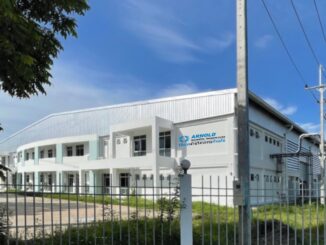 An electromagnetic simulation tool is speeding the commercialization of a breakthrough direct-drive technology for electric vehicles by Magnomatics. The Opera simulator has been used by Magnomatics, a company that was set up to develop new forms of magnetic power transmission, to design a novel direct drive system that integrates a permanent magnet motor with non-contact magnetic gearing.
An electromagnetic simulation tool is speeding the commercialization of a breakthrough direct-drive technology for electric vehicles by Magnomatics. The Opera simulator has been used by Magnomatics, a company that was set up to develop new forms of magnetic power transmission, to design a novel direct drive system that integrates a permanent magnet motor with non-contact magnetic gearing.
Called the Pseudo Direct Drive, this new form of traction motor offers such an improved torque density that it can even be packaged within a vehicle’s wheel. The technology has already been demonstrated on a 22-inch city-bus wheel where it generated a continuous rated torque of 4,000 Nm and speeds of up to 750 RPM, which equates to a top speed of around 80 km/hour. Magnomatics is now engaged in several other Pseudo Direct Drive design projects in areas including marine propulsion, defence vehicles and direct-drive electricity generators for wind turbines.
The design concepts behind Pseudo Direct Drive have emerged from a major design exercise by Magnomatics’ design team, which evaluated thousands of design variations with the aid of automated simulation provided by Cobham Technical Services’ Opera software.
Opera’s finite element modeling, simulation, post-processing and optimization toolchain features a scripting language that allows users to automate their virtual design processes. Using this feature, Magnomatics has built up an extensive library of magnetic gear and motor/generator design utilities that allow its engineers to rapidly investigate new powertrain concepts. These tools provide proven and easy-to-modify design shapes for the component parts of its magnetic gearing and motor/generator systems, such as stators and rotors, as well as special post-processing routines that provide proprietary analyses of the resulting performance.
Typically, Magnomatics uses Opera scripts to evaluate hundreds of design variations, before homing in on shapes and geometries that offer the best performance. These initial design exercises are performed using Opera in a two-dimensional mode, where the simulations only take a few seconds each. Then, once the most promising design concepts have been identified, Magnomatics switches to Opera’s 3D simulation mode to evaluate a small number of potential design solutions in depth.
This simulation phase is critical for Magnomatics as its major design goals, such as the need to reduce the amounts of magnetic material while optimizing torque, compete strongly against each other. Building lots of prototypes would simply take too long and be far too expensive.
During the final virtual 3D prototyping phase, Opera’s speed of execution is critical, as the complete drive system has to be simulated. With motors and generators it’s often possible to reduce the complexity by modeling and simulating just a segment of the radial design, as the shape is symmetrical. However, Magnomatics’ magnetic gearing designs have little or no symmetry that allow the scale of the computation to be reduced.
“Opera underpins a lot of our development work,” said Magnomatics’ Research Director, Dr Richard Clark. “We are a highly design-centric organization and the package’s design automation capability has been critical in helping us to work on so many magnetic power transmission projects.”
Dr. Clark also praises Cobham’s support for its customers, as the company optimized Opera for its magnetic power transmission design, by adding a feature that allows the tool to dynamically model any number of ‘moving’ air gaps in two and three dimensions, something that most other electromagnetic tools do not support. Magnomatics’ magnetic gears and combined motor/gear systems typically use two air gaps for example, and its novel mCVT variable magnetic gear system requires even more.
This feature proved essential during the initial and ongoing development of Pseudo Direct Drive for commercial applications. In-wheel applications have necessitated very careful design of the air gap regions to overcome the problem of severe shock loads. When designing this feature, which allows the drive to withstand shocks of up to 20 G, Magnomatics employed Opera in conjunction with other mechanical and thermal analysis software, for a precise understanding of how its systems will perform in the real world.



